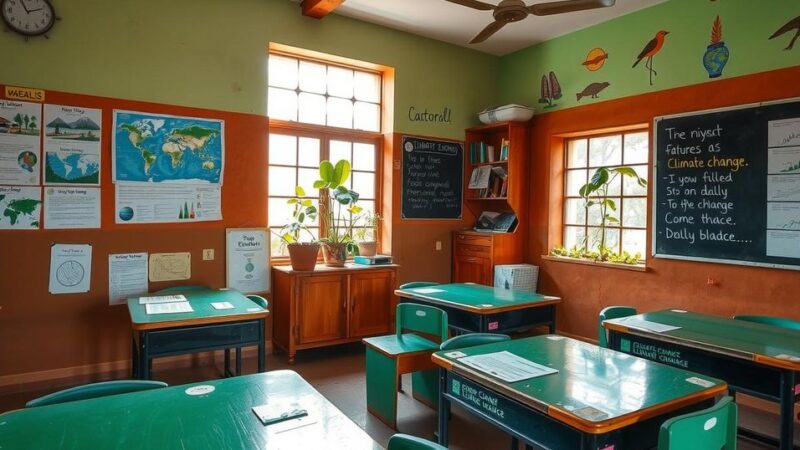The Panama Canal Authority is planning a new dam to tackle drought and secure water supplies, particularly amidst recent severe drought conditions. The proposed US$1.6 billion project aims to enhance storage capacity, facilitate additional ship passages, and meet growing local water demands while addressing community concerns.
Plans are underway for a new dam designed to protect the Panama Canal from the adverse effects of climate change. This initiative, initially proposed two decades ago, is deemed the most feasible solution for maintaining the operational viability of this crucial navigation channel, which has been significantly affected by climate-related challenges.
The Panama Canal, an 82-kilometer waterway connecting the Atlantic and Pacific Oceans, plays a pivotal role in global maritime trade, facilitating approximately 3% of such activities. Providing a shortcut that bypasses a 13,000-kilometer detour around South America, this canal connects 180 routes to over 1,900 ports in 170 countries.
However, 2024 marks a significant challenge for the canal as it coincides with its 110th anniversary. The region has experienced an unprecedented drought, which caused the Gatun and Alhajeula reservoirs, crucial for the canal’s operation, to reach their lowest recorded levels.
To address the water supply needs of Panama’s growing population, exceeding four million, the Panama Canal Authority has implemented a water resource management strategy. This initiative underscores their commitment to enhancing reliability, efficiency, and the adaptability required in response to evolving maritime industry demands.
Recognizing the essential role of the canal in providing drinking water, the authority is exploring the construction of a multipurpose reservoir to offset the water extracted from the existing reservoir system. Ricaurte Vásquez Morales, Panama Canal Administrator, stated, “In Panama, we have a high dependence on rainfall, and it is necessary to increase storage capacity to ensure drinking water and transit water.”
The proposed reservoir, located in the Indio River basin, is regarded as the optimal solution to fulfill future water requirements for human consumption. Plans include the construction of a 90.5-meter high and 840-meter long dam on the Rio Indio, along with an 8-kilometer tunnel to connect to Gatun Lake. This new reservoir could allow for the passage of 15 additional vessels during the dry season while also securing drinking water for local residents.
The estimated cost of this project is US$1.6 billion, identified as the most effective response to the climate-induced challenges facing the canal. Climate experts note that the shifting El Nino weather patterns have lengthened dry seasons, leading to increased drought occurrences in the future, raising concerns in a country known for its heavy precipitation.
In light of recent drought conditions, canal operations have been compromised, resulting in a 33% reduction in ship passage through September 2024. Consequently, vessels now experience prolonged wait times, incurring fees that can reach US$4 million for expedited passage. Rising tariffs for using the canal have been a significant point of contention, particularly for the United States, which is the canal’s largest user.
Local farmers and communities also express concern regarding the proposed reservoir, as estimates suggest that over 2,200 individuals may need to relocate, with an additional 2,000 affected within the reservoir zone. The Panama Canal Authority has affirmed that addressing the needs and concerns of affected residents will be a priority before proceeding with any initiatives.
In summary, the Panama Canal Authority is considering a new dam construction project aimed at mitigating the impacts of climate change and securing water supplies for both canal operations and the local population. The initiative reflects a proactive approach to address the current drought challenges and elevate water storage capacities. Stakeholder concerns, particularly regarding community displacement, will be taken into account as plans move forward.
Original Source: www.waterpowermagazine.com






